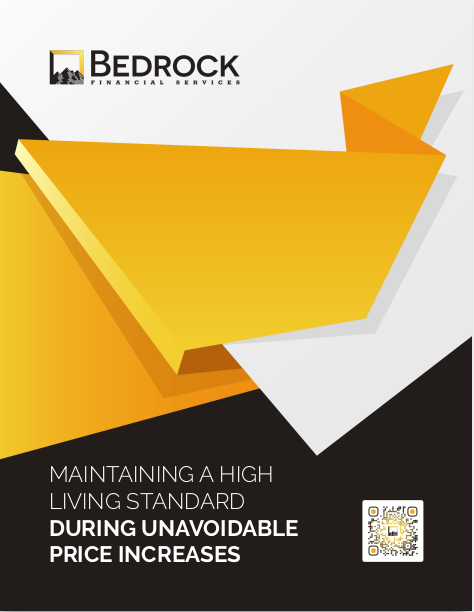Key Takeaways
-
To earn real trust and meaningful engagement on social media in 2025, financial professionals must go beyond generic, static posts. Success now depends on using a content approach that is grounded in timeliness, relevance, and human connection. Simply being present is not enough—your audience needs to feel that you are paying attention to what matters to them, when it matters most.
-
Leveraging a simple yet powerful framework that blends practical updates, seasonal awareness, and transparent communication allows your content to feel natural and intuitive. This approach can dramatically improve visibility and trust while encouraging more genuine conversations with both prospects and existing clients.
Why Your Content Still Feels Off (Even if You’re Posting Regularly)
If you’re consistently sharing content and still not seeing engagement, the issue may not lie in how often you post or even the broad topics you cover. More often, the real disconnect comes from how your content feels. In 2025, readers are more selective than ever. They scroll quickly but judge deeply—evaluating whether a post sounds robotic, irrelevant, or out of touch.
In many cases, content that sounds overly polished, impersonal, or too generalized will be ignored—even if it’s factually accurate. The reality is that most financial posts still blend into the background. People aren’t just looking for financial tips; they want to hear from a real, trustworthy human who understands their current challenges and needs.
Rather than relying on static infographics, stock photos, or templated posts, consider shifting your strategy. Instead, center your messaging around what’s happening right now and pair it with your own perspective. This shift from passive information delivery to active communication is what separates valuable content from digital clutter.
The Three-Part Content Formula That Works in 2025
A structured but adaptable formula can make your social media content feel alive and relevant. Here’s the framework that will help you create content that lands well with your audience:
1. Timely Relevance
Attention is tied to context. Your audience is far more likely to read and respond to your content when it reflects what’s happening in their world. Consider aligning your content with key seasonal and situational events:
-
Tax Season (January–April): Discuss topics like deductible deadlines, contribution windows, or refund planning.
-
Graduation Season (May–June): Address issues around starting a financial journey, managing student loans, or setting up first-time investment accounts.
-
Back-to-School Season (August–September): Talk about budgeting for the new school year, planning for college savings, or seasonal spending habits.
-
Open Enrollment (October–December): Highlight updates on Medicare enrollment periods, changes to federal benefits, or strategic insurance considerations.
It helps to build a seasonal content calendar that mirrors the rhythm of your clients’ lives. Start each month by asking yourself: What is my audience likely thinking about this week, and how can I offer something helpful in that context?
2. Personal Voice
Professional content does not need to be sterile. In fact, your tone can determine whether someone pauses to read your post or scrolls right past it. A professional yet human voice can establish rapport and relatability.
Ways to enhance your tone include:
-
Begin posts with observations from your own day-to-day experiences: “This week, a client asked me about…”
-
Speak plainly. Avoid jargon, unless you define it.
-
Add emotional awareness—acknowledge that financial decisions can be confusing, stressful, or even exciting.
-
Pose open-ended questions to encourage interaction: “What’s one thing you wish you’d known before you filed last year’s taxes?”
By sharing insights from your own experience—without oversharing or becoming too casual—you earn credibility and show empathy. Clients don’t just want technical skill; they want someone who listens, understands, and communicates clearly.
3. Practical Utility
Each piece of content you create should offer something actionable. This is where you turn attention into engagement. Helpful posts don’t have to be complex—simplicity is often more effective. You might:
-
Remind clients to check their beneficiary designations
-
Offer a checklist for preparing year-end documents
-
Share a quick explanation of how RMD rules changed this year
Your goal is to provide a small win. If someone reads your post and feels more informed, more confident, or even slightly more prepared, you’ve achieved something valuable.
Practical content also gets shared more frequently. When a post answers a real question or solves a real problem, your audience becomes your amplifier.
Weekly Content Blueprint (So You’re Not Guessing)
Creating content on the fly is exhausting. A predictable but flexible routine can reduce pressure while keeping your output effective. Here’s a proven weekly rhythm built on the three-part formula:
Monday – Timely Post
Start the week by anchoring your message to a current theme: the start of tax season, a news update, or a financial milestone. Use bold, short phrases that catch attention. You’re not aiming for length—just relevance.
Wednesday – Personal Observation or Client Insight
This is your chance to speak from experience. Think about trends in your recent conversations and share what you’re seeing: “Several people I spoke with this week asked about changing their FEHB plans.”
Friday – Actionable Tip or Quick Reminder
End the week with a small, useful prompt: “Check your current TSP balance against your retirement target” or “Have you scheduled your annual financial checkup yet?”
This structure keeps your message varied and ensures you’re not repeating yourself, while still showing up with consistency.
Avoid These Content Traps
Even well-meaning posts can feel out of touch if you fall into these common pitfalls:
-
Overusing visual templates or filler images – These can dilute the power of your message. Original text matters more than perfect graphics.
-
Being vague or overly broad – Replace “plan for retirement” with “review your retirement income gaps now that you’re 5 years out.”
-
Sounding like a news aggregator – Curation can be helpful, but your insights and interpretation are what make the content yours.
If your audience can’t tell whether you wrote a post—or even if you agree with what it says—they won’t engage. Your unique voice is your biggest differentiator.
Timeliness Builds Authority
Speed isn’t everything, but responsiveness is. When you respond to industry updates or regulatory changes promptly, you reinforce your position as a professional who stays informed.
Topics to monitor and reflect on quickly include:
-
IRS changes to contribution limits or deduction rules
-
Adjustments to required minimum distribution (RMD) schedules
-
Updates to Medicare Part B costs or coverage periods
-
PSHB and FEHB coordination reminders during enrollment season
Aim to publish your take within 24 to 72 hours of a newsworthy event. It doesn’t have to be long—just thoughtful and confident.
Your Content Doesn’t Need to Be Long—Just Thoughtful
Long-form posts have their place, but your best-performing social content in 2025 will likely be short, targeted, and valuable. A single paragraph that answers a timely question is far more impactful than a lengthy essay that feels generic.
Brevity works best when paired with precision. Don’t try to cover everything. Just make sure every word counts. Your audience will thank you with likes, shares, or direct messages.
And when someone reaches out because of something you posted? That’s not just content working—it’s marketing that matters.
The Trust Effect: What Happens After a Few Months
Consistency isn’t flashy, but it’s powerful. When you stick with this formula for 8 to 12 weeks, you’ll begin to see a compound effect:
-
Private messages from followers who never engaged publicly before
-
Increased recall during appointments – clients will say, “I saw your post on…”
-
Organic referrals because your name stays top-of-mind
This shift doesn’t require massive ad spend or a viral moment. It just takes disciplined repetition of a content system that feels human, seasonal, and useful.
Over time, you become more than a source of information—you become a trusted voice.
When to Be Strategic with Offers or CTAs
Most of your content should focus on value, not sales. But there are key windows where a clear invitation makes sense:
-
Early in the year: Encourage IRA contributions before deadlines
-
Mid-year: Suggest retirement progress reviews
-
Fall: Share Medicare updates and enrollment options
-
End of year: Recommend tax planning moves or insurance reviews
These are natural moments where your advice aligns with an action people need to take. By being timely and thoughtful, your call-to-action doesn’t feel pushy—it feels like a helpful next step.
The Formula is Flexible—But the Mindset Is Key
This isn’t about strict rules or rigid schedules. It’s about thinking the way your audience thinks—and showing up as a trusted professional, not just a content creator.
Before every post, pause and ask:
-
Is this timely?
-
Does it sound like something I’d say in a client meeting?
-
Will it help someone feel more informed or confident?
If the answer is yes, hit publish.
This mindset turns your content from a chore into a contribution. And that shift makes all the difference.
Your Social Content Can Start Working Smarter for You
You don’t need to become a full-time marketer to get traction from social media. You just need to post with purpose. When your content feels real, timely, and genuinely helpful, it stands out.
We built Bedrock Financial Services to help professionals like you stay visible and trusted without spending all day online. Our platform supports you with automation, branding, and compliant lead-generation strategies that align with how your audience behaves.
Ready to put this content formula to work? Let’s help you turn every post into a productive conversation.







